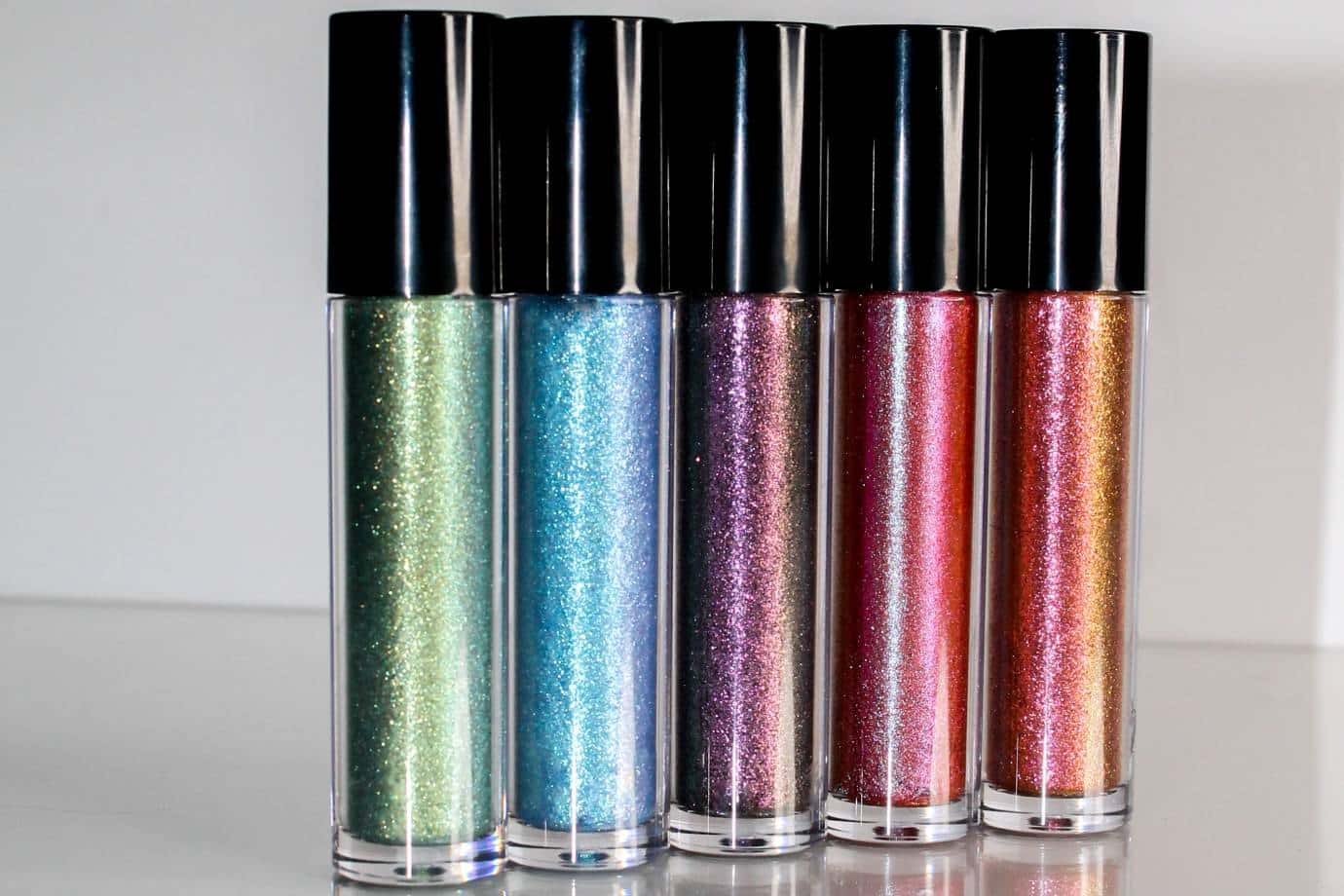Choosing the best eyeshadow formula for your target market is a fascinating and complex venture that all ambitious cosmetics companies must commit themselves to.
The complexities of modern eyeshadow formulation stretch far beyond the ability to choose and mix colors. The fundamentals of sourcing quality ingredients play a key role here, reflecting your dedication to sustainable and eco-friendly practices, as does access to the tools, creativity, and expertise of an industry-leading cosmetics manufacturer like MPlus Cosmetics for exceptional results.
This eyeshadow formulation guide examines the finer details of eyeshadow formulas and their common types, including liquid, powder, cream, stick, and gel. With this article, you can learn how to choose the best eyeshadow formula for your target market.
Eyeshadow Formulation Guide: The Fundamentals
The cornerstones of eyeshadow formulation are critical to any company seeking to develop premium, effective products with mass consumer appeal. Each ingredient in any successful eyeshadow formula plays a crucial role in the product’s attributes, including:
- Texture
- Color
- Longevity on skin
- Shelf life
Talc and Mica: Popular Bases for Any Eyeshadow Formula
Common eyeshadow formula bases are talc (a naturally occurring mineral of magnesium, silicon, and oxygen) and mica (natural silicate minerals with layered structures). These ingredients are prized for their softness, smooth texture (talc), and sparkling, shimmering effect, enhancing visual appeal (mica). They accept added pigments easily and form a cohesive base to build different finishes and shades.

Achieving the Right Consistency
Creating a cohesive, blendable product requires a meticulous balance between wet and dry ingredients. As your trusted eyeshadow palette manufacturer, we rigorously design, manufacture, and test formulas on your behalf, ensuring a reliable, high-quality, and safe final product. A well-crafted, conscientious eyeshadow formula may just set your brand apart in a crowded, competitive marketplace.
High-Quality Ingredients
Premium quality ingredients are critical to the best eyeshadow formula, allowing manufacturers to create a high-performing, safe, and flawless product. Modern consumers prefer natural ingredients, and everything from stunning pigments and skin-safe preservatives to practical binding agents can be sourced naturally and sustainably.
Types Of Eyeshadow – Ingredients And Packaging
The current market offers different types of eyeshadow, each offering a set of unique characteristics and benefits.
Powder Eyeshadow
Powder eyeshadows are lightweight and easy to apply. They contain fillers like talc and kaolin clay, vegetable oils, silicone, mineral oil, colorants (natural or synthetic), texture enhancers, preservatives (e.g., parabens, phenoxyethanol), and fragrances. Powders are ideal for layering and gradual build-up of pigment. They are typically sold in compact cases or palettes for easy access and can be applied with a brush or sponge.
Cream Eyeshadow
Cream eyeshadows have a rich, creamy texture thanks to emollients like dimethicone and jojoba oil. Pigments provide color, while binders ensure the product adheres to the skin and maintains textural consistency. Preservatives prevent spoilage, and thickeners enhance the texture without compromising blendability. Cream eyeshadows are commonly packaged in small pots or tubes for precise application.
Liquid Eyeshadow
Liquid eyeshadows combine ease of use with long-lasting wear. Their water-based formulas contain film-forming agents and emollients which ensure comfortable wear throughout the day. Liquid eyeshadows offer vivid pigment that is ideal for intricate designs and color blending. They are typically packaged in small bottles with applicators for precise application and smooth blending.
Stick Eyeshadow
Stick eyeshadows offer precise application and are ideal for travel due to their convenient portability. They contain pigment, binders, preservatives, thickeners, and fragrances. Their compact format makes them perfect for quick touch-ups on the go, suiting lifestyles that demand fast and effortless makeup application.
Gel Eyeshadow
Gel eyeshadows have a water-based formula enriched with pigments and preservatives, providing a smooth finish. They are packaged in tubes for controlled application. Versatile and buildable, gel eyeshadows can be layered for various looks, allowing for artistic expression. While they may require some practice to master blending and avoid harsh lines, their precision make them a favorite among both makeup professionals and enthusiasts. The result is often a flawless and visually appealing look.

Matte vs Shimmer Eyeshadow Formula: Which is Best for Your Market?
When deciding how to choose an eyeshadow formula, comparing the pros and cons of a matte vs. shimmer palette is critical. The decision ultimately depends on the needs, preferences, and demands of your target market, and the fundamental differences between them are as follows:
Matte eyeshadow
- Non-reflective, flat finish
- Ideal for creating definition and depth, suitable for professional or everyday wear
- Preferred by customers seeking a subtle, natural look and those with mature skin, as a matte eyeshadow formula won’t emphasize wrinkles and fine lines
Shimmer eyeshadow
- Glittery, reflective finish that sparkles, highlighting and brightening the eyes
- Perfect for adding dimension and visual interest to complement daily wear and enhance special occasions
- Typically preferred by younger people or those wishing to adopt a glamorous, bold look
Many cosmetics companies offer matte and shimmer eyeshadow formulation options to appease a broader client base. Although cosmetic trends come and go, the basic choice of matte vs shimmer eyeshadow formula is universal and bears significant attention.
Vegan Eyeshadow Formulation: A Growing Trend
The trend towards ethical, cruelty-free vegan eyeshadow formulation solutions is gaining momentum as modern consumers become increasingly conscious of their cosmetics’ ingredients. Some crucial considerations include:
- Natural ingredients
By focusing on plant-based/mineral-derived ingredients, many vegan eyeshadow formulation solutions are gentle on the skin with a reduced risk of irritation. - Reduced environmental impact
Vegan cosmetics typically align with eco-friendly attitudes and best practices like biodegradable packaging and sustainable sourcing. - Ethical choices
The lack of animal derivatives and no testing on animals make vegan cosmetics a popular, compassionate choice. - Market trends
Vegan eyeshadow, among other cosmetics, is increasingly in demand, with brands rapidly introducing vegan options to meet market demands. - Diversity
Vegan eyeshadows are available in various formulations that cater to a wide range of preferences.
Focusing on vegan solutions can help companies tap into a surging, eco-conscious market of ethical consumers that looks set to grow annually. Choosing the right brush for each formula is crucial. That’s why it is important to work with experienced manufacturers like MPlus Cosmetics.
Conclusion: How to Choose an Eyeshadow Formula for Your Target Market
We hope this eyeshadow formulation guide has illustrated the concepts and methodologies behind creating the best eyeshadow formula. The choice of appropriate, sustainably sourced ingredients is essential to produce an impactful, effective, and highly desirable product.
Aesthetics aside, carefully chosen components can enhance your eyeshadow’s performance and ensure consumer safety. When you partner with MPlus Cosmetics, we will work with you to create an eyeshadow formulation that resonates with your target consumers, surpasses expectations, and meets all required quality standards. Get in touch with us today, and our knowledgeable, experienced team will be happy to assist you, providing all the information, advice, and guidance you need.

